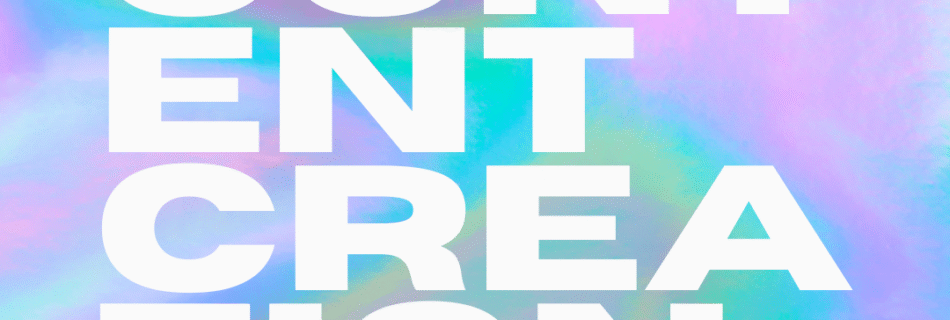content creation
Inside My Content Creation Strategy: From Brainstorm to Final Product Creating compelling content is both an art and a strategy. As a digital marketer and freelancer, my content creation process blends creativity, storytelling, strategy, and tech tools—both manual and AI-generated—to ensure my clients (and my personal brand) stand out. Whether I’m crafting Instagram posts, LinkedIn updates, or branded assets, each piece follows a structured, thoughtful process. Here’s an inside look at how I bring content ideas to life—from raw brainstorming to the polished final product. Step 1: Brainstorming That Aligns With Purpose Every content piece starts with a purpose. I begin by asking: I break my brainstorming into themes like: For raw ideas, I use tools like: Step 2: Storytelling Through Structure Once the idea is in place, I craft a story. No matter how technical or promotional, storytelling is at the heart of my strategy. I ask: Whether I’m writing a post caption, reel script, or carousel content, I structure it in this flow: Hook → Relatable Problem → Value → CTA (Call to Action) Even in short-form reels or memes, this structure helps keep the message impactful and concise. Step 3: Strategy Before Design This is where the creative meets the strategic. I map out: I also refer to my Content Calendar on Notion or Canva’s planner to organize the timeline and themes for the week/month. Step 4: Creation Using Manual + AI Tools Here’s where the fun begins! I blend manual tools with AI-generation tools to speed up, polish, and refine the creation process: Manual Tools I Use: AI Tools I Use: Step 5: Feedback & Tweak Phase This is the most underrated yet important phase. If it’s for a client, I share drafts for feedback through Notion boards, Google Drive, or direct WhatsApp/Slack updates. If it’s personal content, I review it with: I tweak based on: Step 6: Final Product & Publishing Once I’m confident, I finalize the content in high resolution, prep captions, add tags, and schedule using: Publishing is not the end—it’s just the launch point. I always engage with my audience in comments and DMs, track performance, and reflect on what worked and what didn’t. how we approach design 🔹 1. Understand the Purpose Before opening any tool, ask: What is the content for? Who is the audience? What action should it trigger (click, save, buy, follow)? This sets the intention for the design. 🔹 2. Research & Moodboarding Collect references, brand guidelines, color palettes, font inspiration, and layout ideas.Use tools like Pinterest, Behance, or Milanote to organize your visual direction. 🔹 3. Structure the Layout Use wireframes or rough sketches (Figma or paper) to plan where things will go—hierarchy is key. Make sure the eye naturally flows from headline ➝ image ➝ CTA. 🔹 4. Choose Visual Elements Wisely Stick to 2–3 fonts, a consistent color palette, and high-quality images or illustrations.Use Canva or Illustrator to experiment quickly with components like icons, shapes, overlays, etc. 🔹 5. Apply Branding Consistently Incorporate logos, signature colors, tone of voice, and any brand elements to ensure recognizability. 🔹 6. Keep it Functional & Aesthetic Design for both beauty and clarity.Don’t let creativity overpower readability—make sure CTAs stand out, text is legible, and the message is clear. 🔹 7. Test & Tweak Show it to a few people. Gather feedback. Refine spacing, alignment, contrast, or copy.Revisit with fresh eyes before finalizing. 🔹 8. Export Smartly Export in the right dimensions, resolution, and format based on the platform (Instagram, website, etc.).Use tools like Photoshop or Squoosh to optimize file sizes for web. making the content consumer centric and according to business preferences 🔷 1. Empathize with the End Consumer (Consumer-Centrism) Research their pain points, motivations, language, and behavior. Analyze their attention span, content consumption habits, and emotional triggers. Ask:“What does the audience want to see vs. what are we trying to say?”“What kind of content makes them feel seen, heard, or understood?” 🔍 Example: Use Instagram polls, comments, feedback, or competitor analysis to uncover what engages them. 🔷 2. Align with Your Expertise (Creative Strategy Layer) Strategically decide what content formats, tones, and platforms best suit the message. Use your toolbox—Canva, Figma, AI tools, Adobe Suite—to bring the idea to life efficiently. Apply storytelling, design thinking, or funnel logic depending on the stage of the customer journey. 🛠️ Example: If your strength is storytelling + design, create emotional reels or informative carousels that also look visually premium. 🔷 3. Incorporate the Business Owner’s Vision (Brand Alignment) Identify the non-negotiables: their brand tone, values, offers, deadlines, or industry context. Maintain their voice and business goals while modernizing or enhancing delivery with your skillset. Keep them involved in approvals of high-level messaging, tone shifts, or campaign ideas. 💼 Example: A founder who prefers minimalist visuals and wants a 20% engagement boost within 3 weeks should be reflected in content style and KPI focus. 🔷 4. Map the Sweet Spot (The Strategic Convergence) At the intersection of the three—consumer need, your creative edge, and the owner’s vision—you define the core strategy. 🧠 Ask: What is relevant to the audience? What is feasible for me to create? What is acceptable and beneficial for the brand? 🔷 5. Execute, Measure & Evolve Launch the content or campaign. Track key insights: saves, shares, DMs, CTRs. Gather feedback from both analytics and the client to evolve your next move. 📈 Cycle it forward: Constantly tweak based on performance, platform changes, and emerging audience preferences. Closing Thought: Creativity + Systems = Scalable Success Great content doesn’t happen by accident—it’s a blend of curiosity, creativity, and consistency. My process helps me stay organized, inspired, and results-driven without burning out. If you’re a business looking to streamline your own content creation, start with a structure that allows for both strategy and spontaneity. Need help building your content system or want to collaborate? Let’s connect. thinking process My strategic and qualitative thinking process blends three core pillars: consumer-centrism, my creative expertise, and the business owner’s vision. I …

